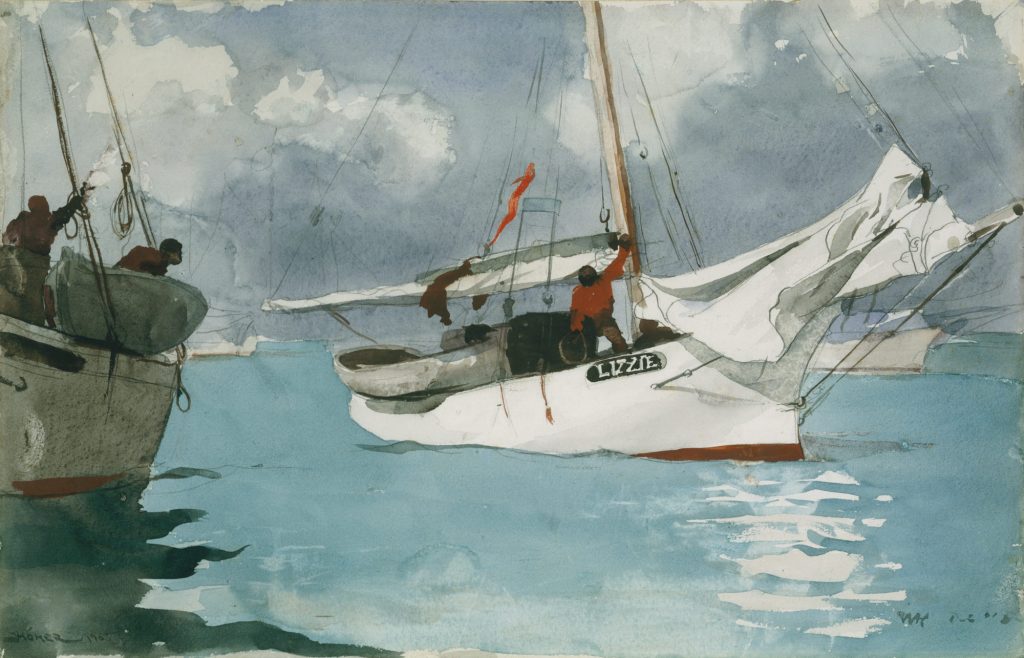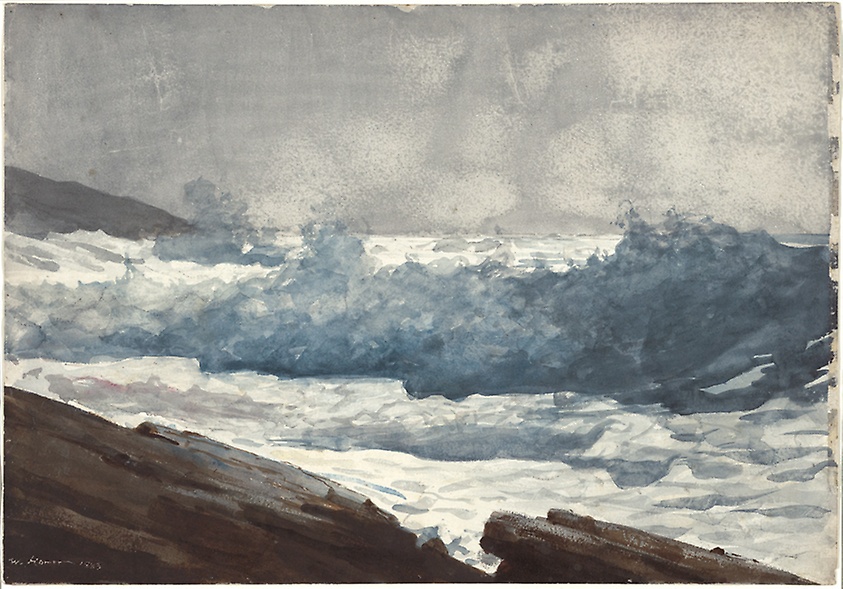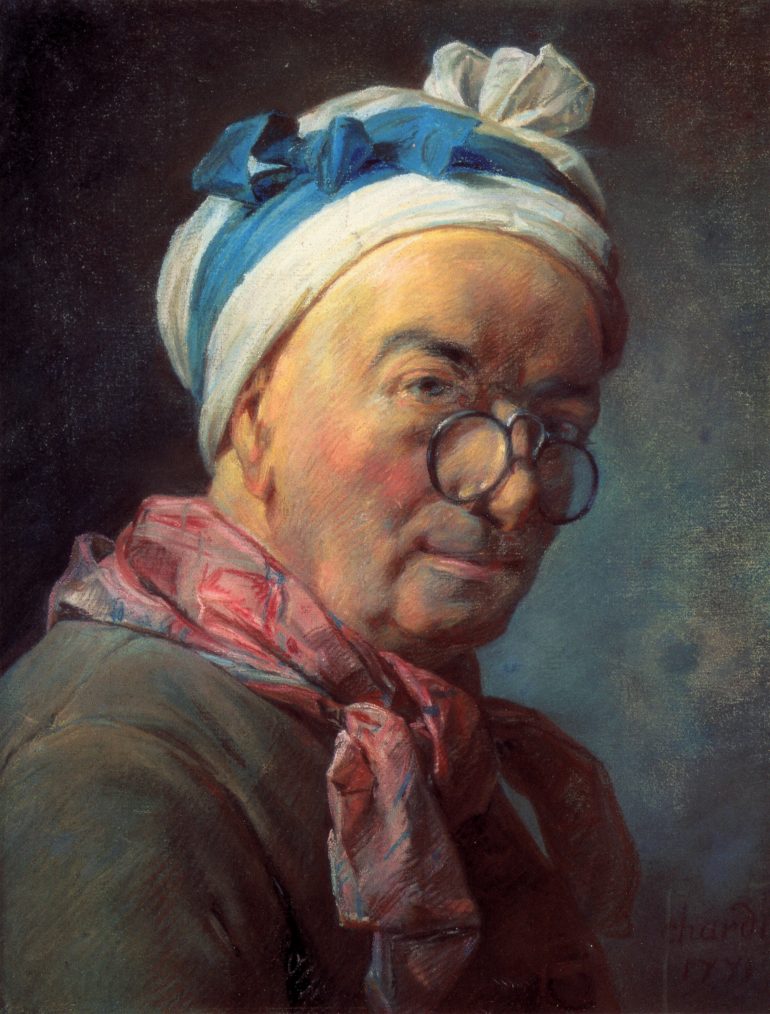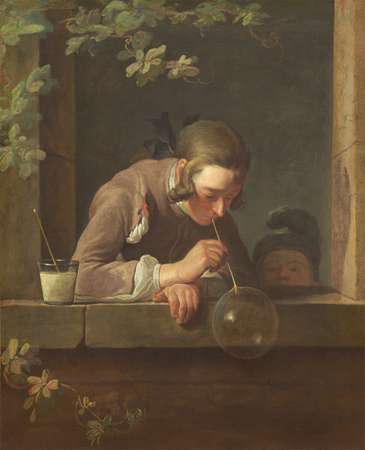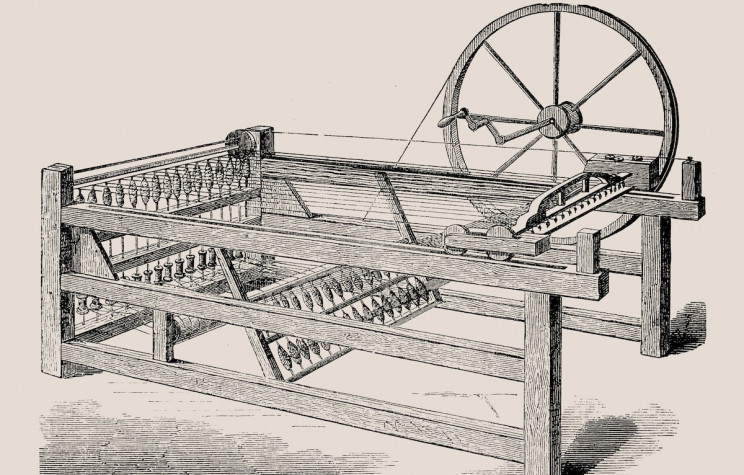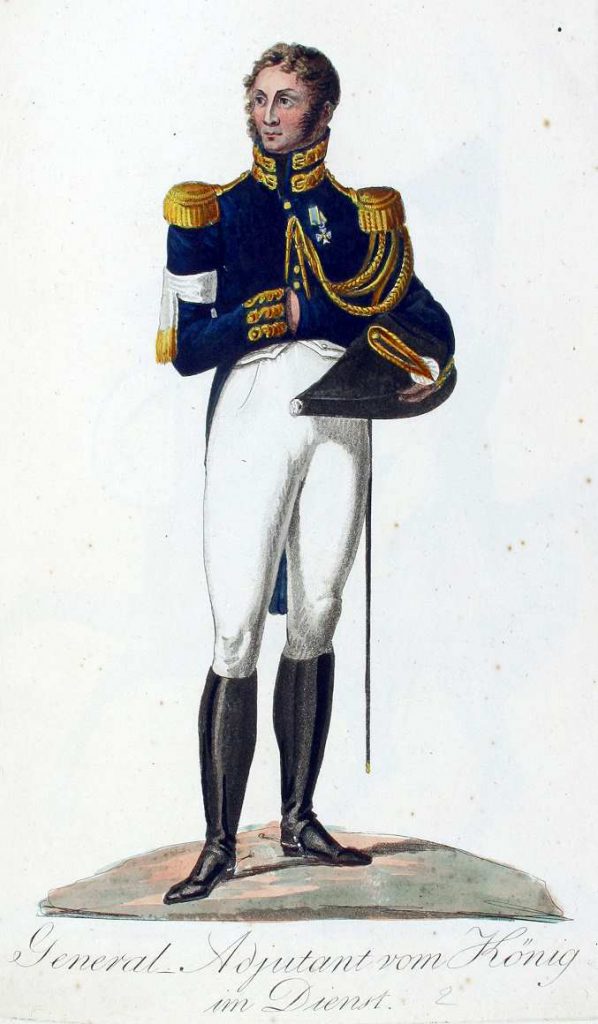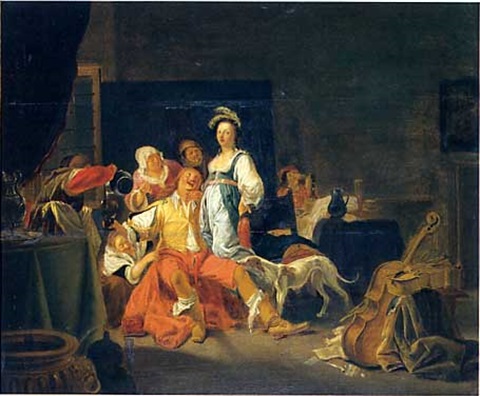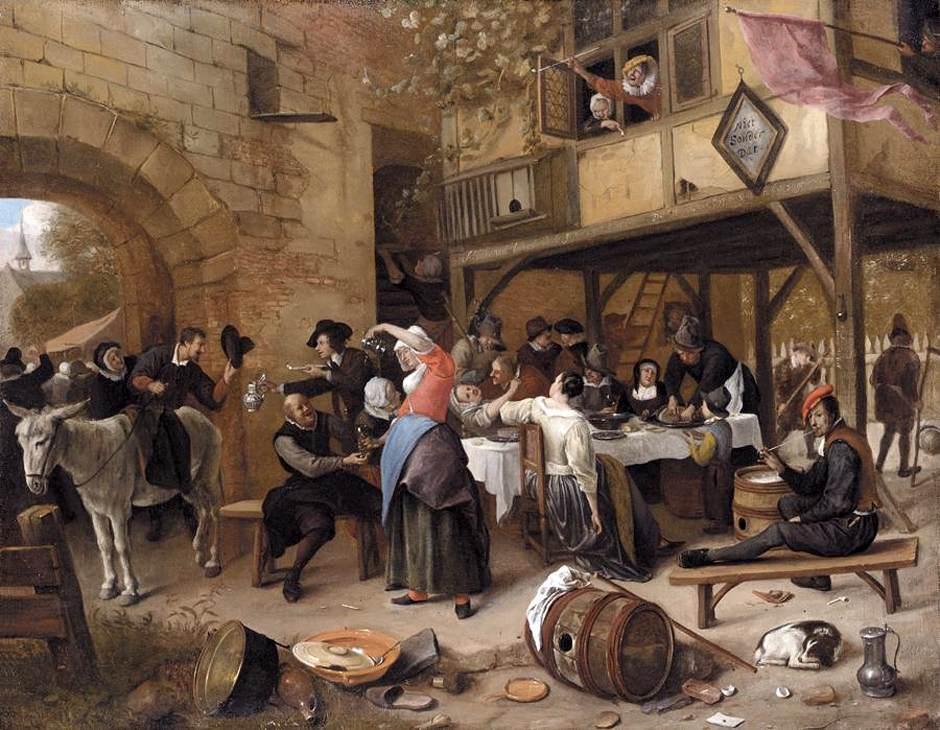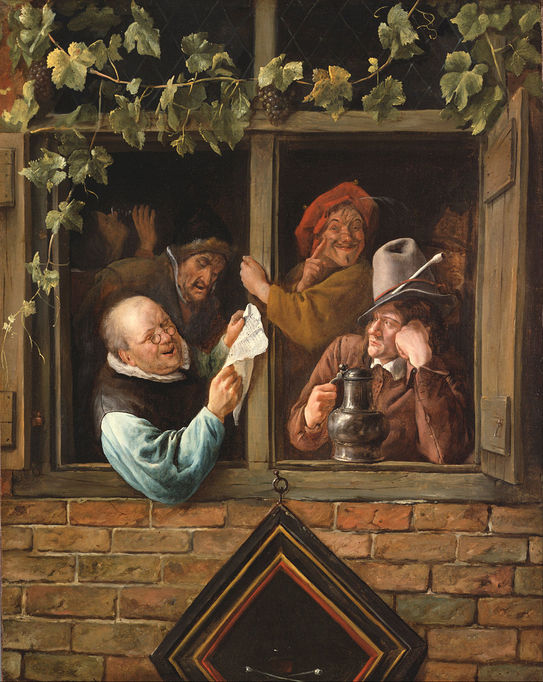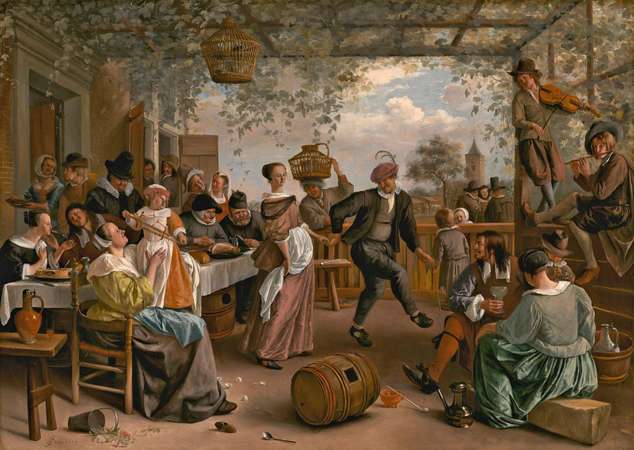The Victorian era was well known for its extravagance and decorative touches. England at the time was ruled under Queen Victoria who played a big part in Victorian fashion and art. During her ruling, England’s technological advances from the Industrial Revolution helped fashion spread across the country. As big advocates of the arts, Prince Albert and Queen Victoria created the Great Exhibition, an international art exhibition that stretched eight miles. It was at the exhibition where textile designers were able to showcase their designs to the world. This created a major shift in fashion. Fashion no longer belonged exclusively to the upper class. Due to the great technology at the time, the mass production of fabrics allowed the middle class to become big consumers of these decorated fabrics. The list of fabrics highly consumed by the middle class included patterned cottons and woven silks.

http://www.vam.ac.uk/content/articles/t/tunisian-textiles-at-the-great-exhibition/
The Great Exhibition in 1851 led to fashion’s role distinguishing people of certain social classes. The dress, for example, was an essential piece found in every woman’s wardrobe, despite their social class.

The dress has the same characteristics you would find in a dress worn by an upper class female. The neckline is wide yet conservative and the colours are soft.
http://www.gogmsite.net/early_victorian_-_1837_-_18/queen_victoria/1851_dress_worn_by_queen_vi.html
There were certain types of dresses dedicated for occasions and certain classes. For example, women of the upper class were expected to wear more conservative dresses compared to women of the middle class. These dresses were stiff as “dropped shoulder lines and corsets” were restrictive. Women in the middle class wore petticoats, corsets, or chemises under their gowns and dresses.
The dresses we associate with the Victorian era were actually skirts with a bodice. The skirt itself was what made the Victorian fashion so remarkable. Skirts at this time were shifting away from the traditional dome shape frame to a more flared silhouette. Flared skirts began to overpower the women’s fashion industry because it accentuated the woman’s waist size, creating an hourglass illusion. This illusion was so idealized by fashion designers that crinoline, a thick type of fabric made of horsehair, was used to help add the needed volume for this skirt. Although elegant looking, the “multi layered petticoat” skirt was not the most comfortable piece of clothing to wear. It no longer made sense to create an article of clothing that was not comfortable to wear for long periods of time. In the 1850’s “hoop skirts” made designers rethink the construction of the skirt. The hoop skirt provided a nice shape without the weight, unlike the crinoline. The hoop skirt consisted of steel rings of various sizes that was held together by fabric tape. This new innovation enabled skirts to eliminate the amounts of fabric that was used before.
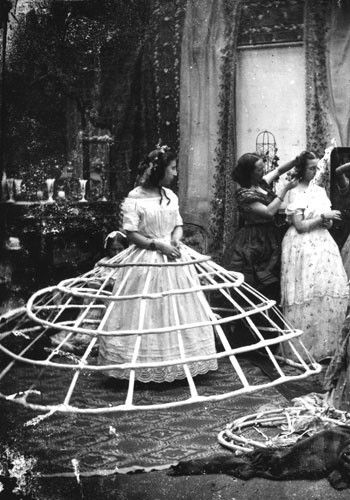
http://www.kristinholt.com/archives/6877
Sources:
http://www.gogmsite.net/early_victorian_-_1837_-_18/queen_victoria/1851_dress_worn_by_queen_vi.html
https://www.metmuseum.org/toah/hd/txtn/hd_txtn.htm
https://en.wikipedia.org/wiki/Victorian_fashion
https://www.royal.uk/queen-victoria
https://sites.google.com/site/thevictorianmiddleclass/clothing-and-fashion


